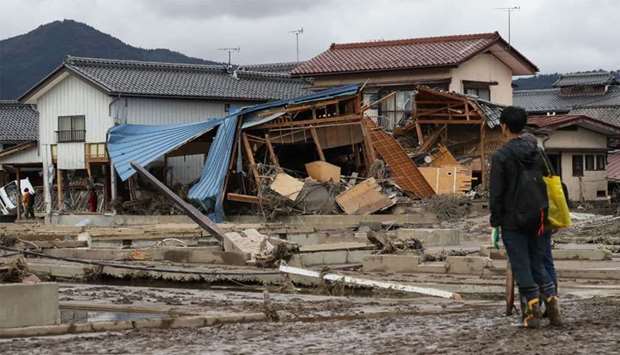Japan's government said Wednesday it would set aside millions of dollars to help areas devastated by Typhoon Hagibis, which killed more than 70 people across the country.
Hagibis slammed into Japan on Saturday, unleashing fierce winds and unprecedented rain that triggered landslides and caused dozens of rivers to burst their banks.
By midday Wednesday, the government put the toll at 74, with more a dozen people still missing.
Prime Minister Shinzo Abe said his government would offer 710 million yen ($6.5 million) to help areas affected by the storm.
The money will come from some a 500 billion yen emergency reserve, he said.
Tokyo will also fast-track the disbursement of subsidies to more than 300 disaster-hit municipalities.
‘The government will stand united to tackle the issue of supporting victims, so that they will be able to return to normal life as quickly as possible,’ Abe said.
As of Wednesday morning, more than 10,000 households were still suffering from electricity blackouts, while more than 110,000 households are without running water, top government spokesman Yoshihide Suga told reporters.
‘Today, too, rescue workers are making their utmost efforts in search and rescue work,’ he said.
‘Due to the heavy rains we've experienced, the level of water is rising in rivers and there are spots where the ground is getting muddy.’
‘We call on people to keep vigilant about landslides and floods,’ he added.
Television footage showed devastated residents returning to homes filled with brown mud, and rescuers searching a hillside for a family missing after a landslide.
The country's northeast was particularly hard hit by the typhoon -- with a death toll of 26 in Fukushima prefecture, the highest among the 36 of Japan's 47 prefectures that were affected.
Collapsed embankments were observed at around 80 locations along 55 rivers in the country, the infrastructure ministry said, as it continues to asses the extent of the damage.
Local trains have gradually resumed operation but some Shinkansen bullet trains were still suspended in the hard-hit Nagano and Niigata regions in central Japan.

